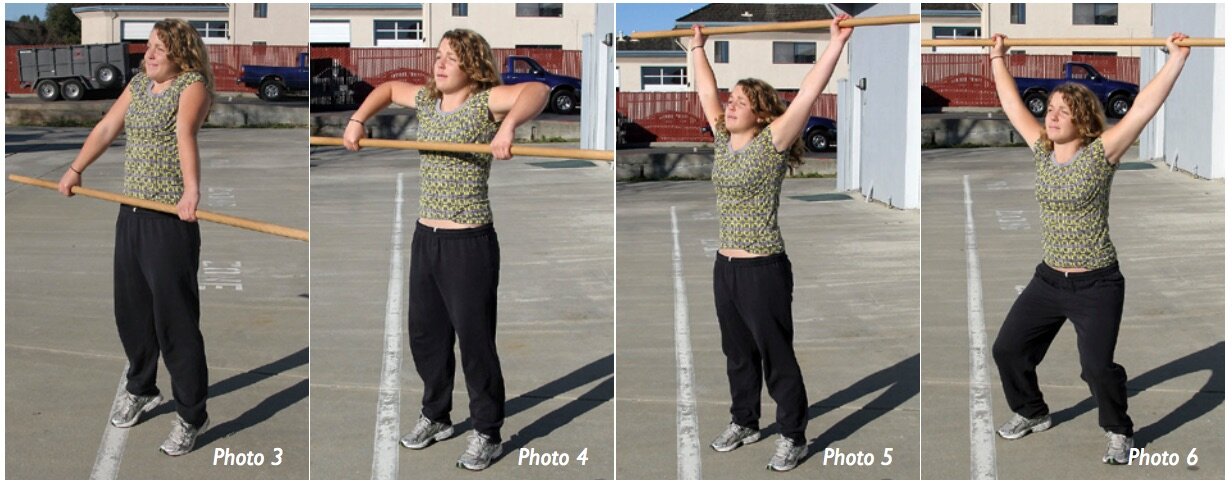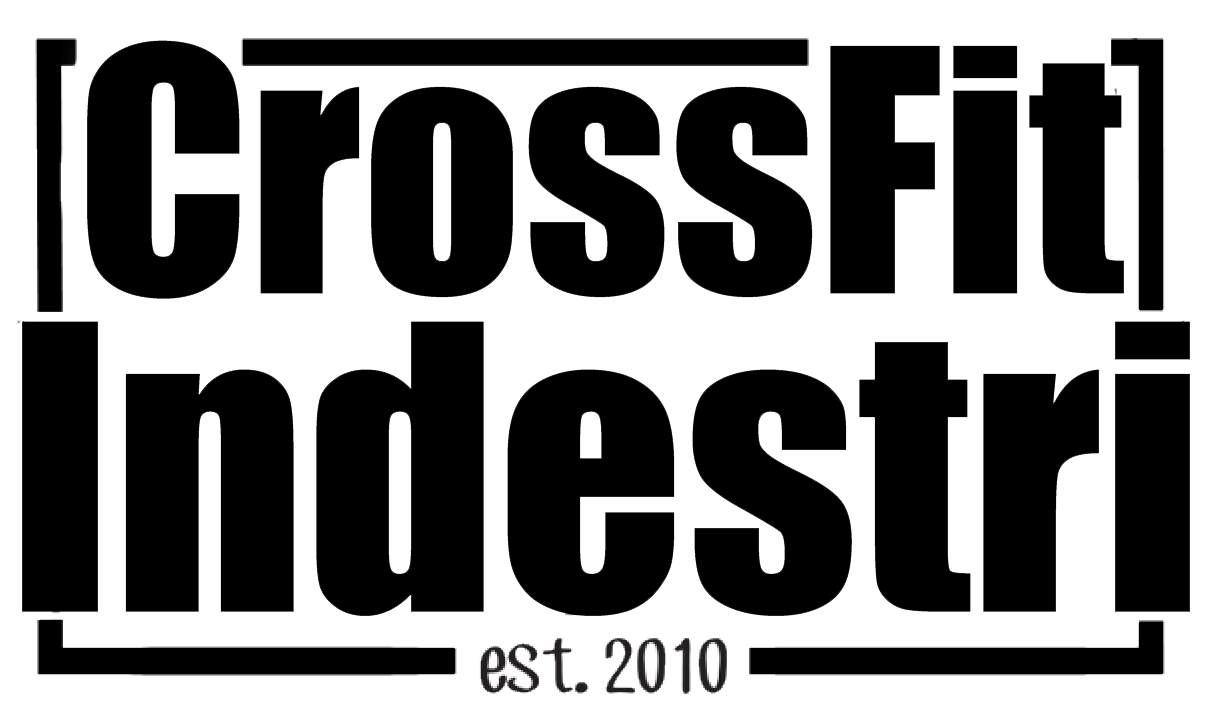Burgener Warm up - Friday, Sept 22nd/17
Self Education
Today, we are looking at the Snatch and what else better to review it with than a look at the Burgener Warmup: Now I could write a bunch about what the Burgener Warm Up is or who Mike Burgener is... But you could also skim back the the blog of ( Link) and read one I have already written. so instead I send you to a Journal article from the man himself.
If I have said it once, Ive said it 1000 times, and don't worry if you miss it here, I'll say it again down the road. If you want to learn more and understand CrossFit, the best resource is:
CrossFit Journal Article:
First Published in CrossFit Journal Issue 53 - January 2007
The Burgener Warm-up:
Mike Burgener,This warm-up consists of six different sequences that are important for learning to perform the Olympic lifts. The Burgener warm-up is performed with a length of PVC pipe or a dowel and specifically trains the second and third pulls of the snatch. Repetition of these six sequences with little or no weight conditions the body to move properly through the power phases of the snatch and the clean and jerk. In subsequent articles, I’ll cover skill transfer exercises for the snatch, and the positioning pulls (the first pull off the ground and the scoop) for both lifts.The essence of the Olympic lifts is creating momentum and elevation on the barbell through a range of motion that begins at the floor and finishes with the bar overhead (in the snatch and the jerk) or racked at the shoulders (in the clean). I recommend incorporating the Burgener warm-up into your daily routine regardless of the workout. It is remarkably effective at teaching and reinforcing the basic concepts of performing the Olympic lifts.
The sequence:
is as follows, always in this order:1.Down and up2. Elbows high and outside3. Muscle snatch4. Snatch land5. Snatch drop6. Hang power snatch
Down and up:
This is by far the most important aspect of the warmup. It is also known as the dip-drive, the second pull, or the jump. It’s not a jump like a jump in basketball but a vicious extension of the ankles, knees, and hips. This triple extension creates momentum and elevation on the barbell, allowing it to become momentarily weightless. This weightlessness of the bar is what allows the lifter to pull himself under the bar into the receiving position (the “third pull”). The movement begins in the high hang position. Keeping the chest up (torso vertical), butt back (lumbar curve intact, no muted hip), and bar close to the hips, dip down to roughly quarter-squat depth (photo 2). Immediately spring up into triple extension with a full shrug of the shoulders (photo 3). There is no hesitation at the bottom of the dip, just as there is no hesitation of a bouncing ball on the ground. This eccentric (downward) contraction is an elastic storing of energy prior to the concentric (upward) action on the barbell. This is the jumping action that I constantly stress when teaching the Olympic lifts. 
Elbows high and outside:
In the snatch and clean, the arms do not bend until after completion of the down and up portion of the lift. The arms are much weaker than the hips, legs, and traps, and bending them early limits the power that can be applied to the bar. This second sequence in the Burgener warmup mimics the upper-body movement in the beginning of the third pull (which will be covered in fuller detail later). Keeping the elbows high and outside allows the bar to remain close to the body during the third pull. The irony of this sequence is that the bar is never actually pulled up like this by the arms in any of the Olympic lifts. Instead, the elbow movement (high and outside) contained in this sequence is part of the process of pulling the body under the barbell, which has been made momentarily weightless by the force of the second pull. I include this movement in the warmup, however, because it trains for a more efficient pull. Problems arise when a lifter does not keep the bar close (usually caused by having the elbows down and in rather than high and outside) or swings the bar away from the body (in which case the elbows are typically too straight). Practicing elbows high and outside daily creates a mindset of keeping the bar close to the body while performing the lifts. The movement begins exactly the same as the previous one, with the down and up. From the high hang position (photo 1), keeping the chest up (torso vertical), butt back (lumbar curve intact, no muted hip), and bar close to the hips, dip down to roughly quarter-squat depth (photo 2). Immediately spring up into triple extension with a full shrug of the shoulders (photo 3) and, this time, pull the elbows up high and outside (photo 4), like a scarecrow. There is no hesitation at the bottom of the dip/down, nor is there any noticeable distinction between the shrug and the elbows rising (though they do occur in that order).http://media.crossfit. com/cf-video/DownUp.wmv 
Muscle snatch:
The end of the third pull of the snatch moves the barbell from in front of the chest to locked overhead. The muscle snatch is an upper-body strengthening exercise that teaches the upper body portion of the third pull, focusing on the pull under and the receiving position. It is an extension of the previous sequence in which the barbell is pulled up into the finishing position over the head (photo 5) after the elbows have come high and outside. There is no rebending of the knees when solidifying the bar overhead. This is an upper-body strengthening exercise to focus on pulling one’s body under the bar. In the snatch, the bar basically becomes weightless at the end of the second pull (the down and up). The elbows go high and outside during the first phase of the third pull as the hips retreat and the body begins to descend. This is performed with all the gusto possible, as is the final pull-under, which finishes with the bar locked overhead. It is for learning this aggressive pull-under that I teach the muscle snatch. The bar is taken from the high hang when first learning the muscle snatch and then later from the floor as proficiency is established. The muscle snatch is one of my favorite exercises when strengthening the body for the competition snatch.http://media.crossfit. com/cf-video/Elbows.wmv
Snatch land:
Snatch lands are used right after the muscle snatch to train the proper receiving position for the snatch. In this warm-up, we land in the quarter-squat position. This movement can also be done landing in the full squat position. The movement begins with the bar locked overhead in the frontal plane and held with a snatch grip. With a slight dip-drive of the hips and knees, the lifter heaves the bar upward while quickly pulling his body down under the bar into a quarter-squat position (photo 6). Receiving the bar in this quarter-squat position actually familiarizes the lifter with receiving the bar in a power position. Note we are taking each step of the snatch in sequence. Learning how and where to receive the bar is the critical lesson when using snatch lands.http://media.crossfit. com/cf-video/MuscleSnatch.wmv
Snatch drop:
The snatch drop is a variation of the snatch land that omits the initial dip and lands in a full squat position. To begin, the lifter locks the bar overhead in the frontal plane, pushing up on the barbell, arms locked and tight. With a tight core, she drops into a full squat position. No heave, just a drop from the standing position (photo 7). Footwork here is critical. The feet are in the jumping position at the start, just beneath the hips. On command, the lifter drops directly into the full-squat landing position. Notice that I did not say “the lifter drops into a quarter squat and then rides it down to the bottom.” The lifter should land as low as possible, with the body strong and tight. Speed, explosiveness, and tightness (muscle tension throughout the body) are critical in snatch drops. 
Hang power snatch:
Now it’s time to put it all together and power snatch the barbell. The simple instructions are to jump the barbell up and then land with it overhead. More thoroughly: starting in the high hang position, jump the barbell through the full range of motion and land in the quarter-squat position with the bar locked overhead. This incorporates the down and up with a full shrug and sufficient force to propel the barbell upward. Keep the bar close to the body by pulling the elbows up high and to the outside. The feet move rapidly from the jumping position to the landing position, while the body moves from triple extension to the quarter-squat position.
Putting it all together:
Typically, three to five repetitions of each of these sequences are performed before moving on to the next one. E.g., three “down and up”s, then three “down and outside”s, then three muscle snatches, and so on. Just about everyone can learn to hang power snatch a dowel regardless of their physical condition, and doing so has immense benefits. In the next few issues, we will cover skill transfer exercises for the snatch and the positioning pulls for the snatch and clean. The end result will be practicing full squat snatches.http://media.crossfit. com/cf-video/HangPowerSnatch.wmvhttp://media.crossfit. com/cf-video/cfj-nov-05/ burgener-warm-up.wmv
Have Fun With this little Gem from CrossFit Open in 2016
Stouty
Friday September 22, 2017
Focus:
12 Mins Every 90 seconds ( increase weight)3 position Snatch Complex:Squat SnatchMid Hang Squat SnatchHigh Hang Squat Snatch.Beginners or those without Squat Snatch Mobility use Power Snatch and same weight every round.
Workout Of the Day:
7 Min AMRAP10 power snatches 75/553 bar muscle-ups.
Lvl 2 Fitness
7 Min AMRAP10 power snatches 75/553 Jumping bar muscle-ups.
Lvl 1 Technique:
7 Min AMRAP10 power snatches 75/553 Chest to Bar Rows & 3 Box Dips
Cash Out:
Coaches Choice.Check back each night at 8pm for the next days WOD.


